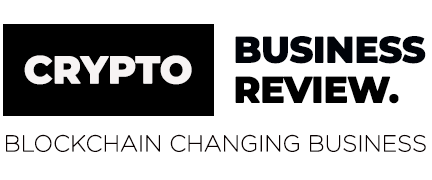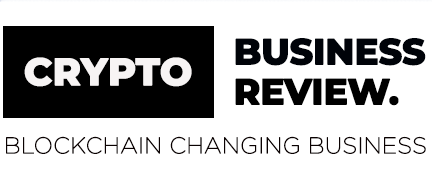The coronavirus pandemic has caused tremendous challenges and a shift in priorities throughout the retail supply chain. As demand skyrockets for some consumer goods, other retail sectors expect months of declining sales. Many IT leaders face the difficult prospect of juggling their response to the pandemic while still needing to advance innovation, often with reduced staff and access to technology.
In this extraordinary operating environment, working efficiently is more important than ever. For blockchain projects, IT leaders can focus on three critical areas to increase their chances of success.
Improving data quality
Systems that feed into blockchain platforms must have a way to accurately and uniquely identify products so that suppliers, distributors and retailers can communicate effectively. Otherwise, the blockchain will simply propagate the inaccurate and incomplete product data that challenges the existing supply chain.
Standards provide the common data format and unique identities for products that are critical to support retail use cases for blockchain. By feeding the highest quality data sets into a blockchain, IT leaders can support their organization’s ability to create a rich product story that builds trust with consumers.
For example, blockchain has been tested to improve supply chain visibility for several years, leading to the development of growing platforms like IBM Food Trust, which major retailers like Walmart and Albertsons are currently using to track perishables. To prepare to use IBM Food Trust for traceability, supply chain partners rely on a foundation of global data standards, such as Global Trade Item Numbers (GTINs) for unique product identification and Global Location Numbers (GLNs) to track places in the supply chain such as factories, distribution centers and stores. These standards provide a bridge between divergent business processes so that supply chain partner systems can interact and transact with clarity and efficiency.
In addition to traceability, one of blockchain’s most noteworthy benefits is providing consumers with more information about a product’s source — something that may grow in importance for earning consumer trust in a post-coronavirus culture. A recent hackathon hosted by the Global Dialogue on Seafood Traceability produced a chatbot called Nemo that used blockchain to digitally record catch, landing, shipment and sale information with existing standards that support interoperability among partners in the seafood supply chain.
Nemo is one example of the type of additional technologies that may be needed to solve data capture issues, which blockchain does not address and may make worse. If bad data goes into a ledger, the blockchain becomes an immutable record of bad data. For blockchain solutions to be successful, all partners involved in capturing and sharing product data must collaborate on common data governance.
Collaboration for blockchain success
While the retail industry focuses on crisis response, timelines for blockchain projects could be extended. Many blockchain pilots are predicted to remain as pilots until 2022, and it may be years before individual fishermen, packhouses or farm fields are blockchain-enabled with technologies like Nemo or other user-friendly apps. In the meantime, collaboration on data standards can move the industry forward.
Just as blockchain doesn’t make data perfect, it also doesn’t make partners instantly more collaborative; however, retail already has a time-tested model. It has cooperated for more than 45 years on standards for barcode scanning within point-of-sale systems and advanced attributes and data sharing across the supply chain. The same approach could be applied to scale blockchain technology.
Industry stakeholders can come together to agree on the types of data that should be shared on a blockchain. That is the first step to creating interoperable blockchains that will preserve a choice of solutions for different kinds of businesses.
The interoperability of blockchain
We see systems interoperate every day. You may be reading this article, for example, on a device connected to a plug-and-play USB port or HDMI cable. In the context of blockchain, interoperability is necessary for the technology to scale and for stakeholders to access data they need to make the right business decisions, regardless of the solution they deploy. There will not be one singular way to use blockchain technology, so solutions must be compatible with each other and plug seamlessly into existing data systems.
Different blockchain ecosystems have already emerged in the retail supply chain — from Hyperledger Fabric to Enterprise Ethereum. These ecosystems will need to communicate for industry partners to be able access and synthesize the information recorded on a blockchain, and ultimately, offer consumers the full range of information they want about products. Data exchange within and between blockchains needs a common language.
Electronic Product Code Information Services (EPCIS) and Core Business Vocabulary (CBV) are two examples of widely used standards that capture and share the physical movement and status of products from business to business and ultimately consumers. EPCIS enables disparate applications to exchange event data and CBV provides the definitions of data values that populate the data structures defined by EPCIS. Together, these existing standards can help blockchain projects answer “what, where, when and why” questions for supply chain trading partners with disparate systems.
Immutable, distributed ledgers supported by this type of standardized foundation could transform the consumer experience by bringing two-way engagement to a traditionally centralized and linear supply chain. We could inevitably see transparency become a common part of our experience with everyday products. This year, for example, a blockchain project called “Thank My Farmer” h
Blockchain’s potential
A significant gap exists between the type of product experience consumers want today and what a centralized, linear supply chain can often provide. Blockchain projects can help close the gap if they create seamless, scalable solutions with high throughput. Focusing on data quality, collaboration and interoperability will help organizations achieve that goal.
About the author
Melanie Nuce is the senior vice president of corporate development at GS1 US. She leads a team that investigates new technologies, partnerships and business opportunities to increase the relevance and reach of GS1 Standards — the most widely used supply chain standards in the world. She oversees the exploration of collaboration opportunities to help businesses leverage emerging technologies including IoT, blockchain and machine learning. Ms. Nuce has more 20 years of retail supply chain experience, focusing in recent years on retail industry collaboration to improve inventory accuracy, exchanging standardized product data and achieving source to store supply chain visibility.





